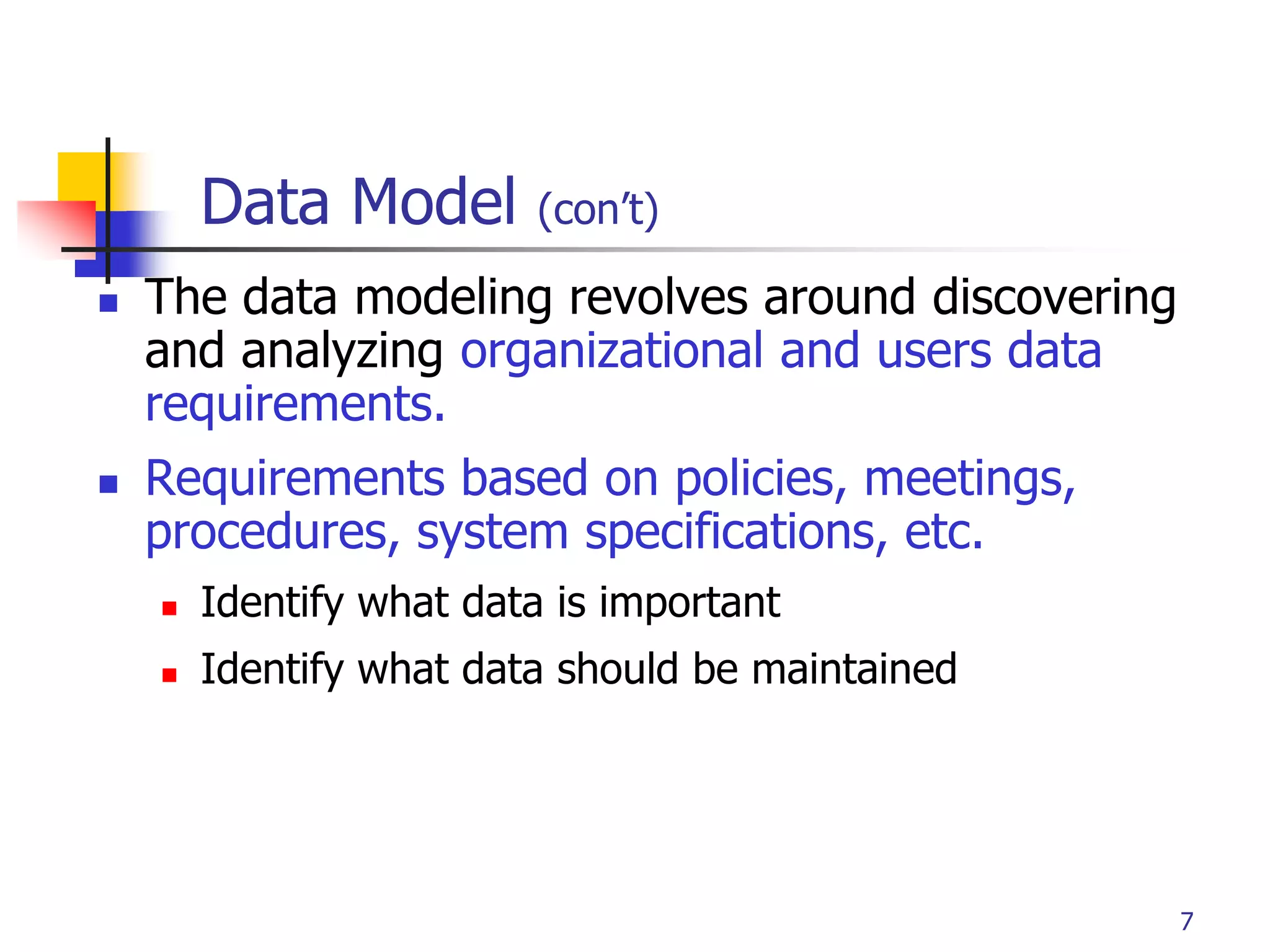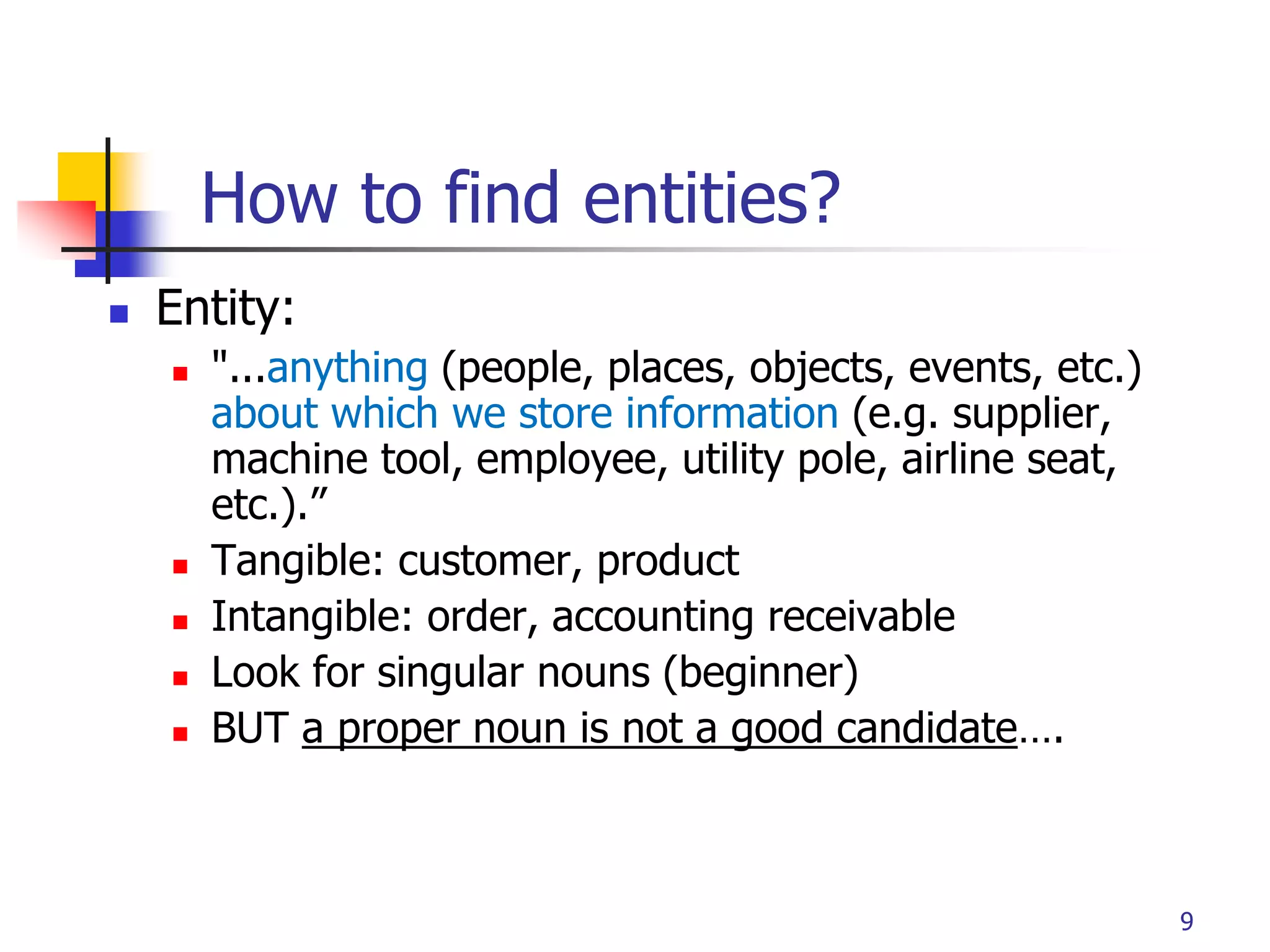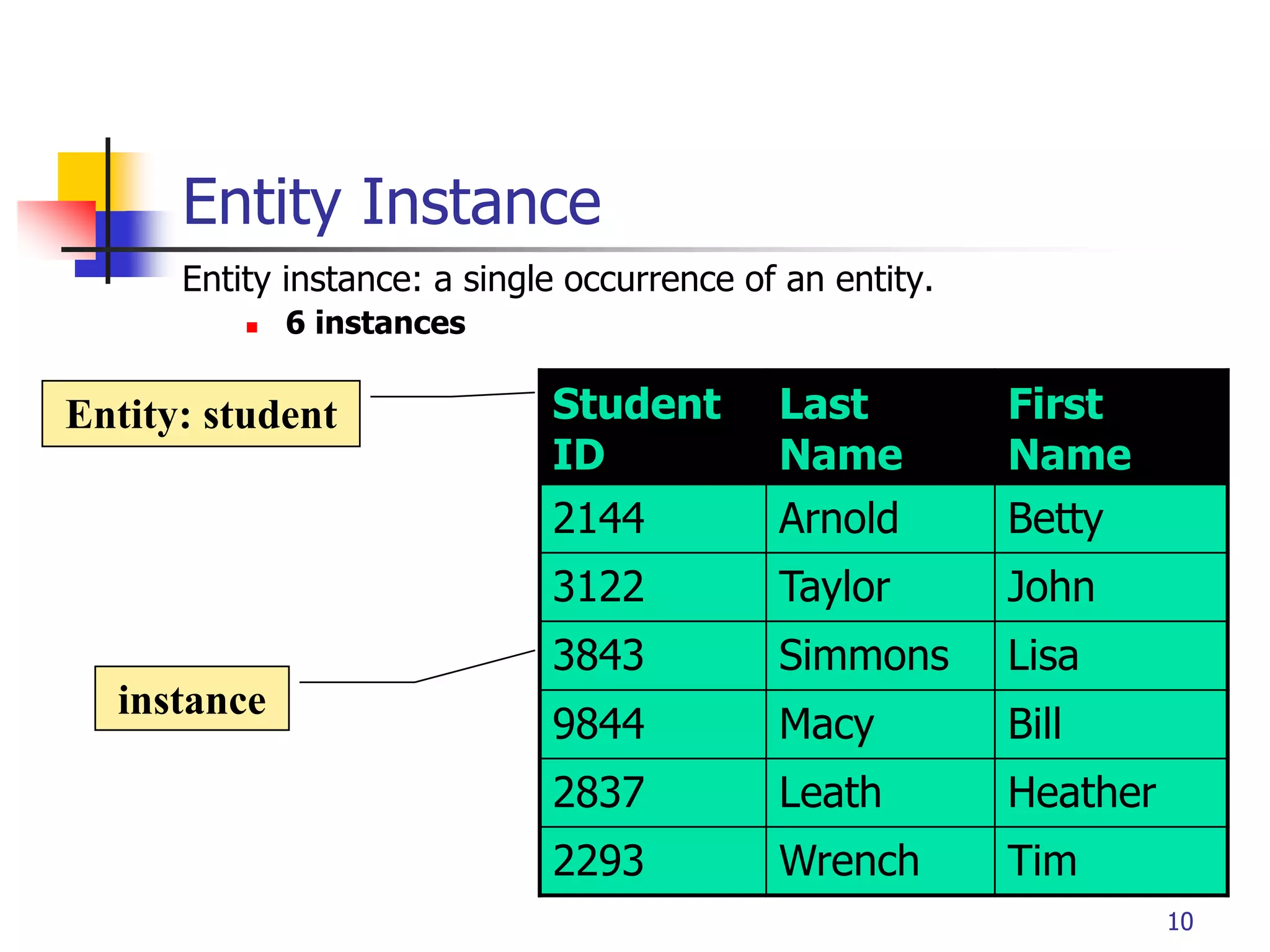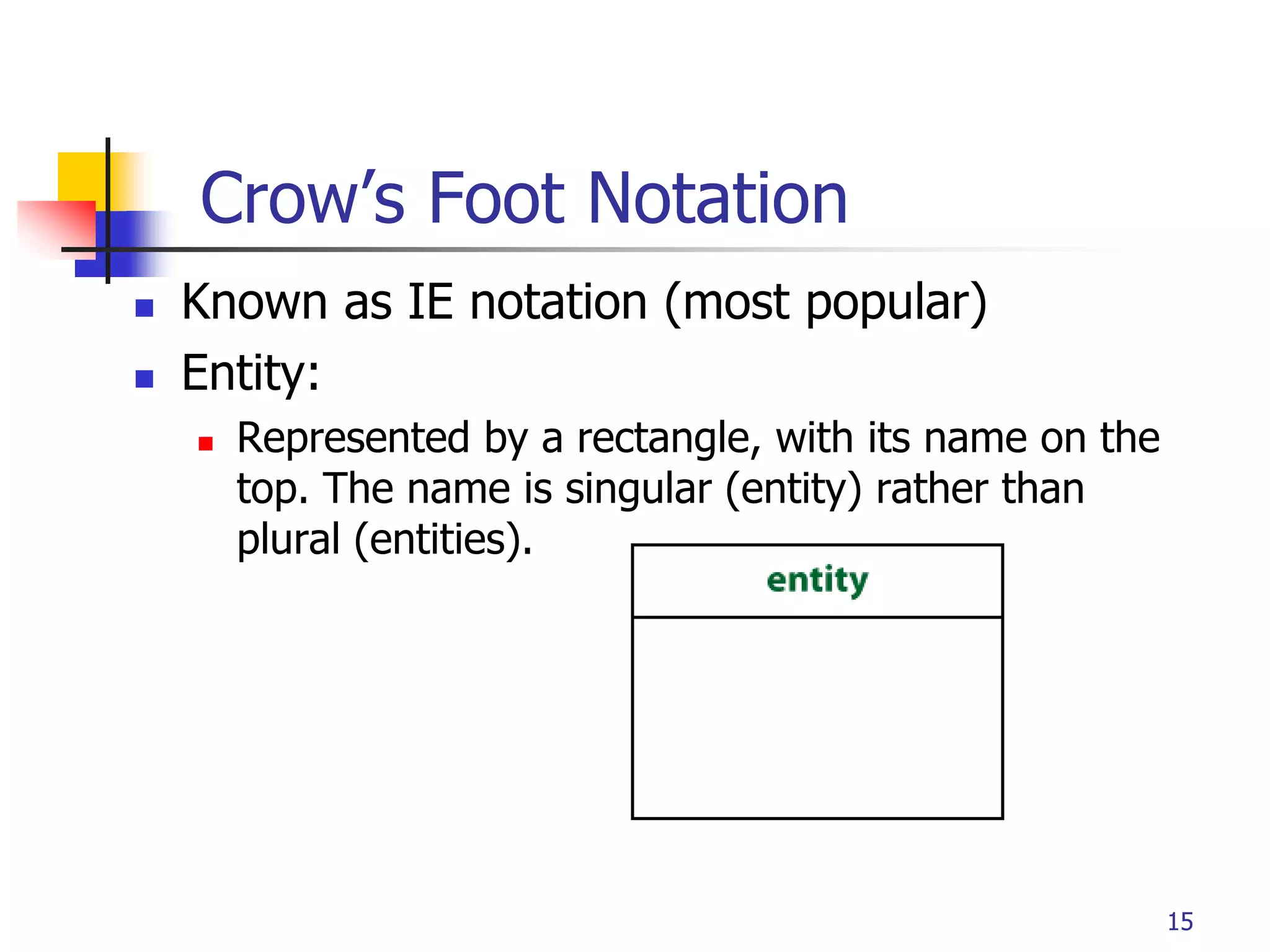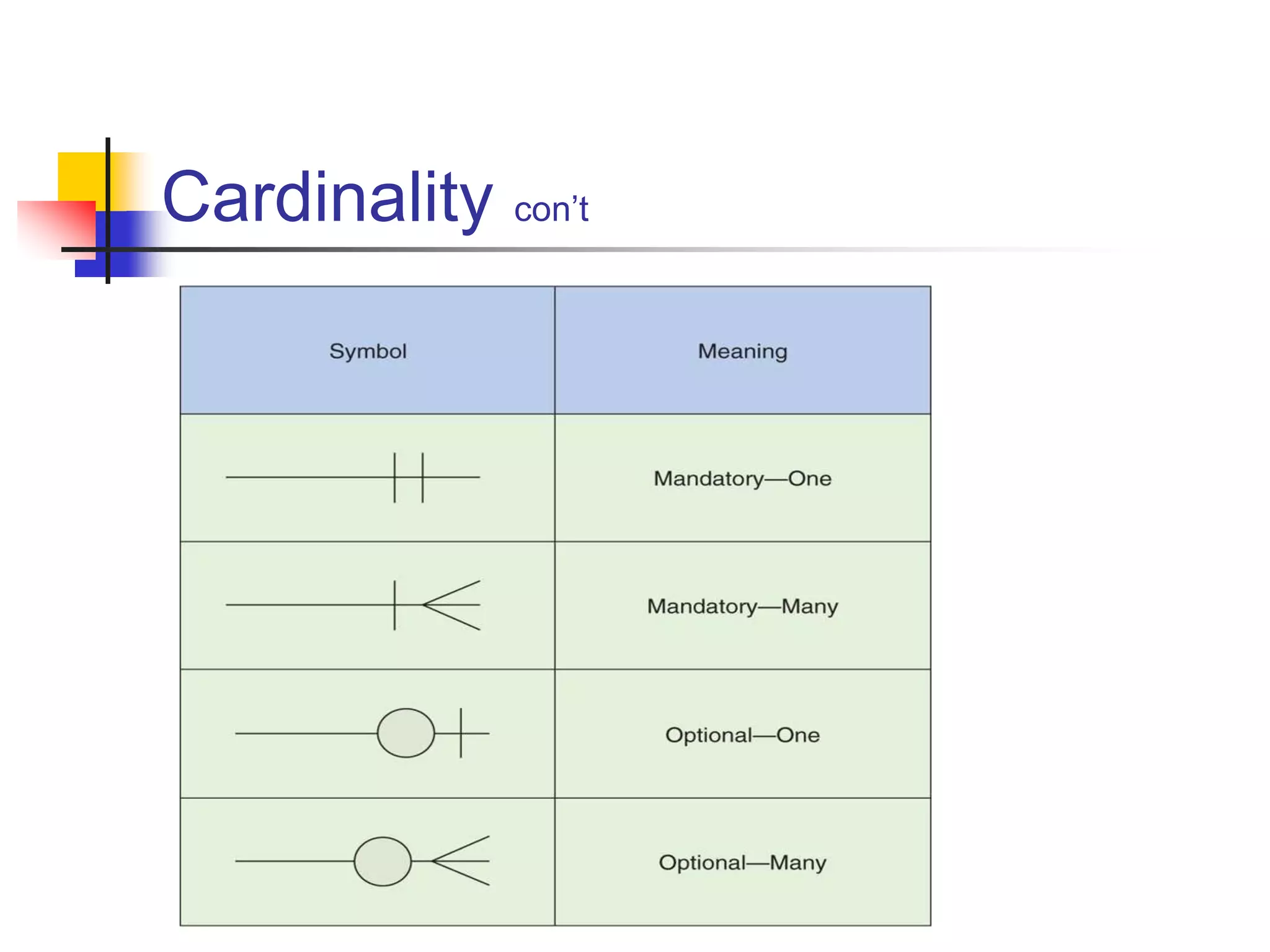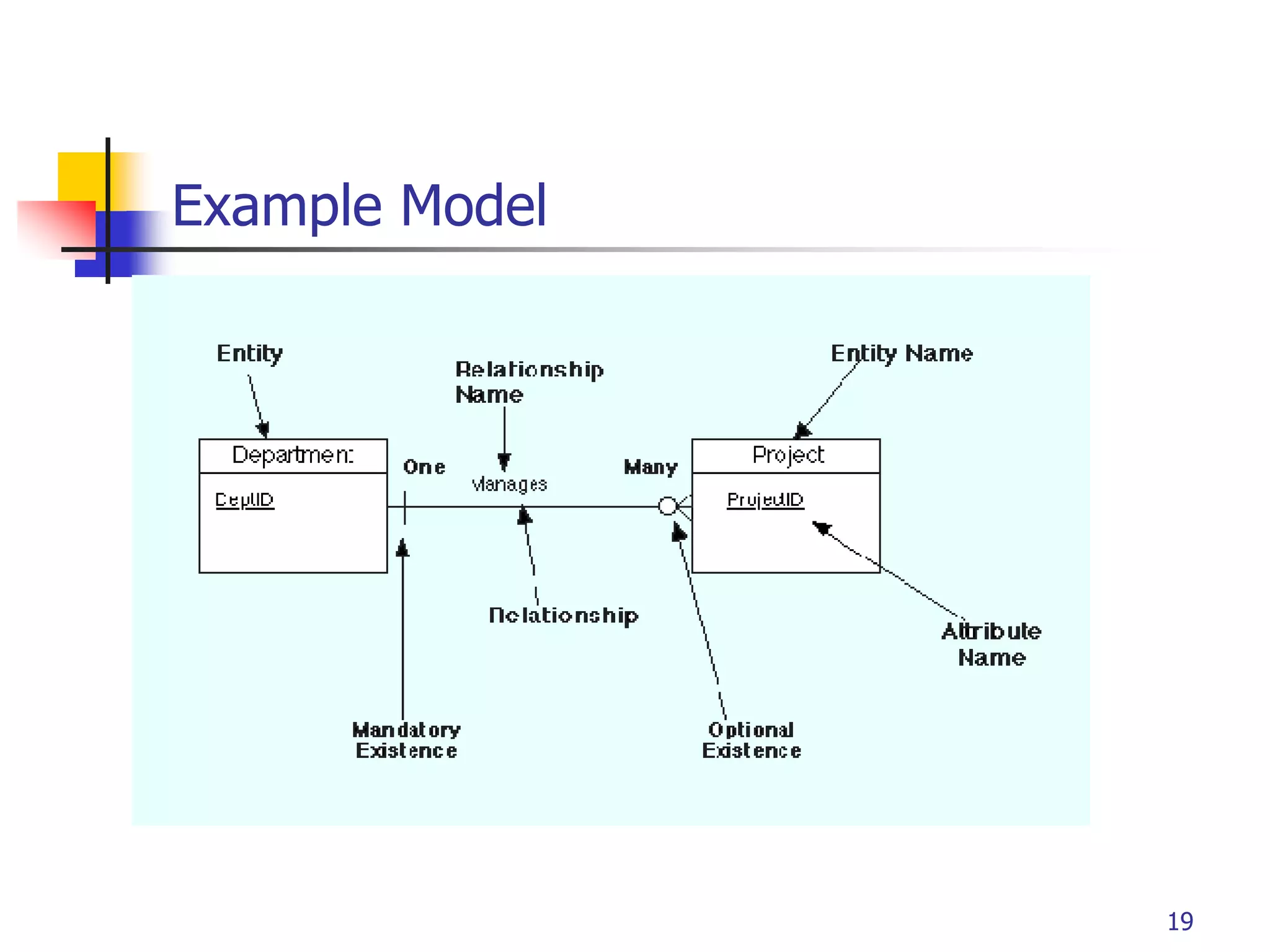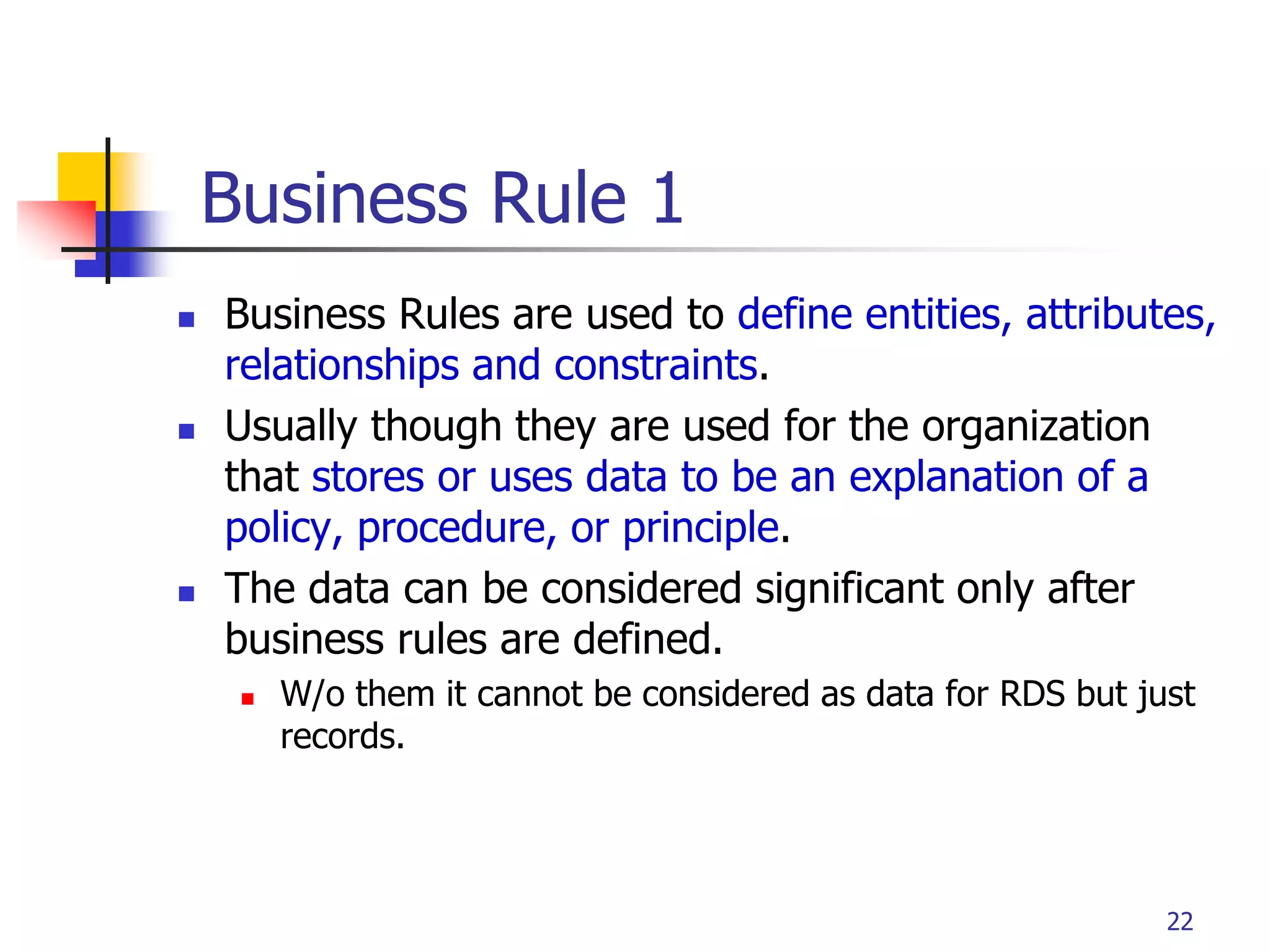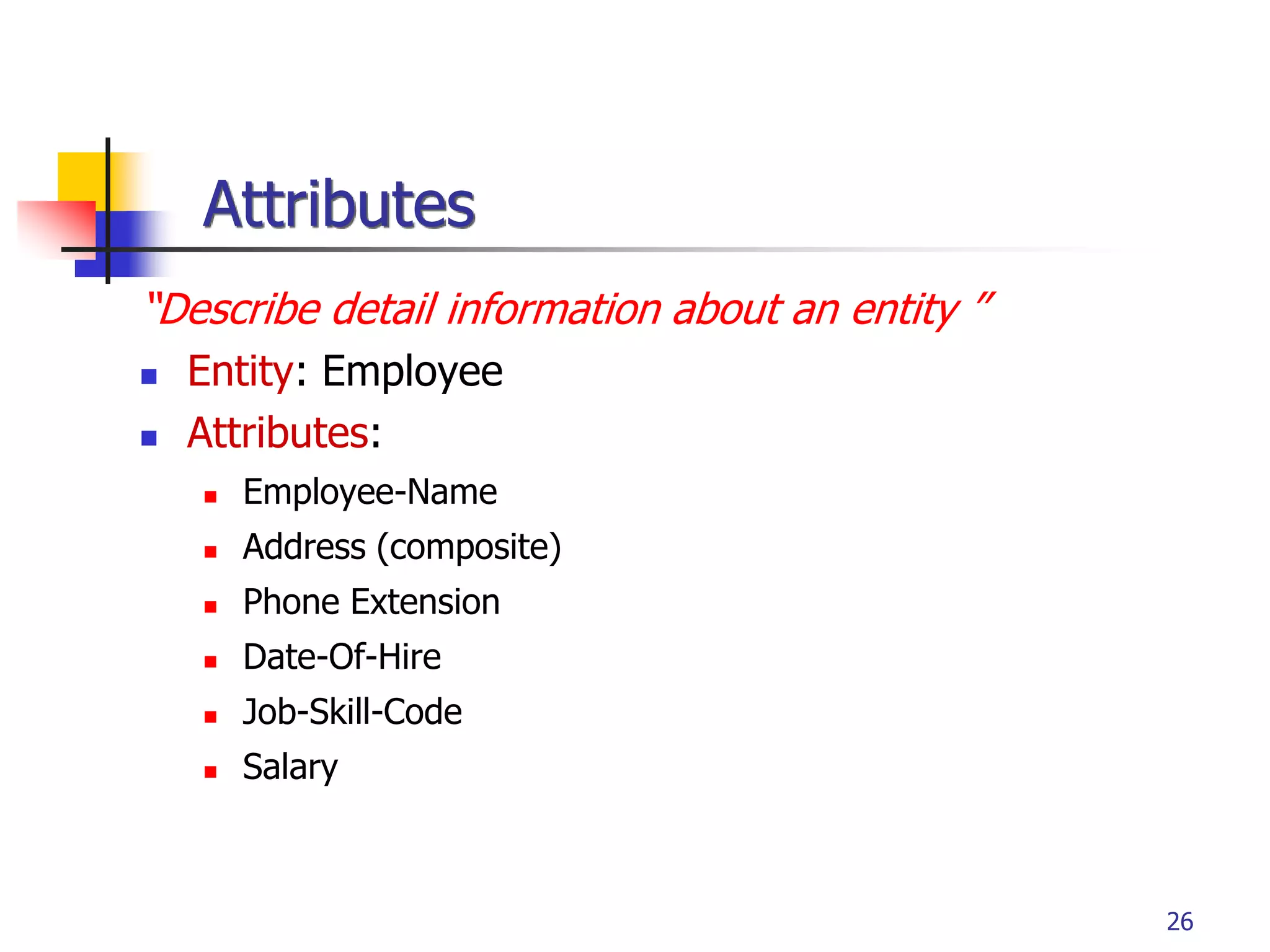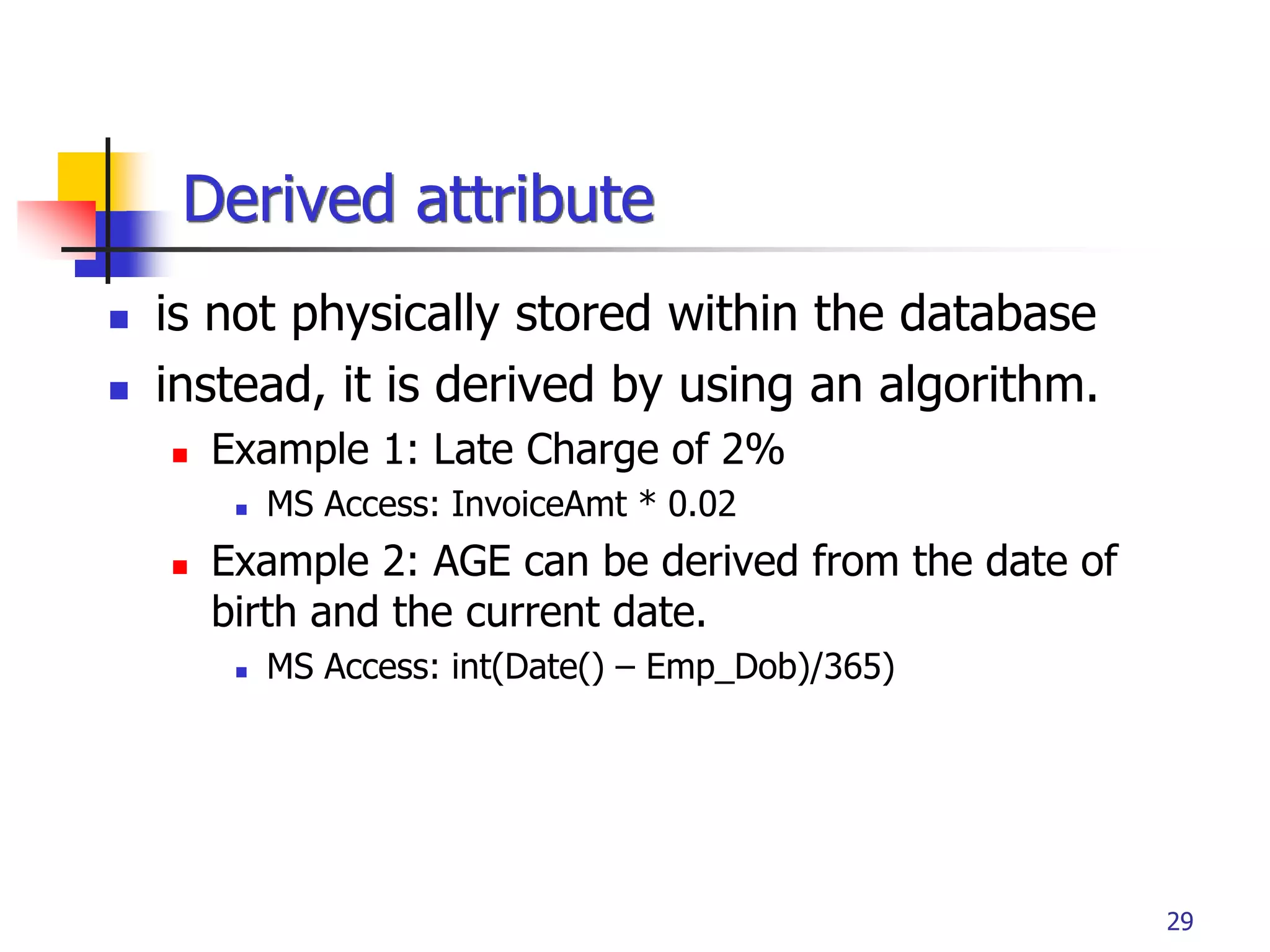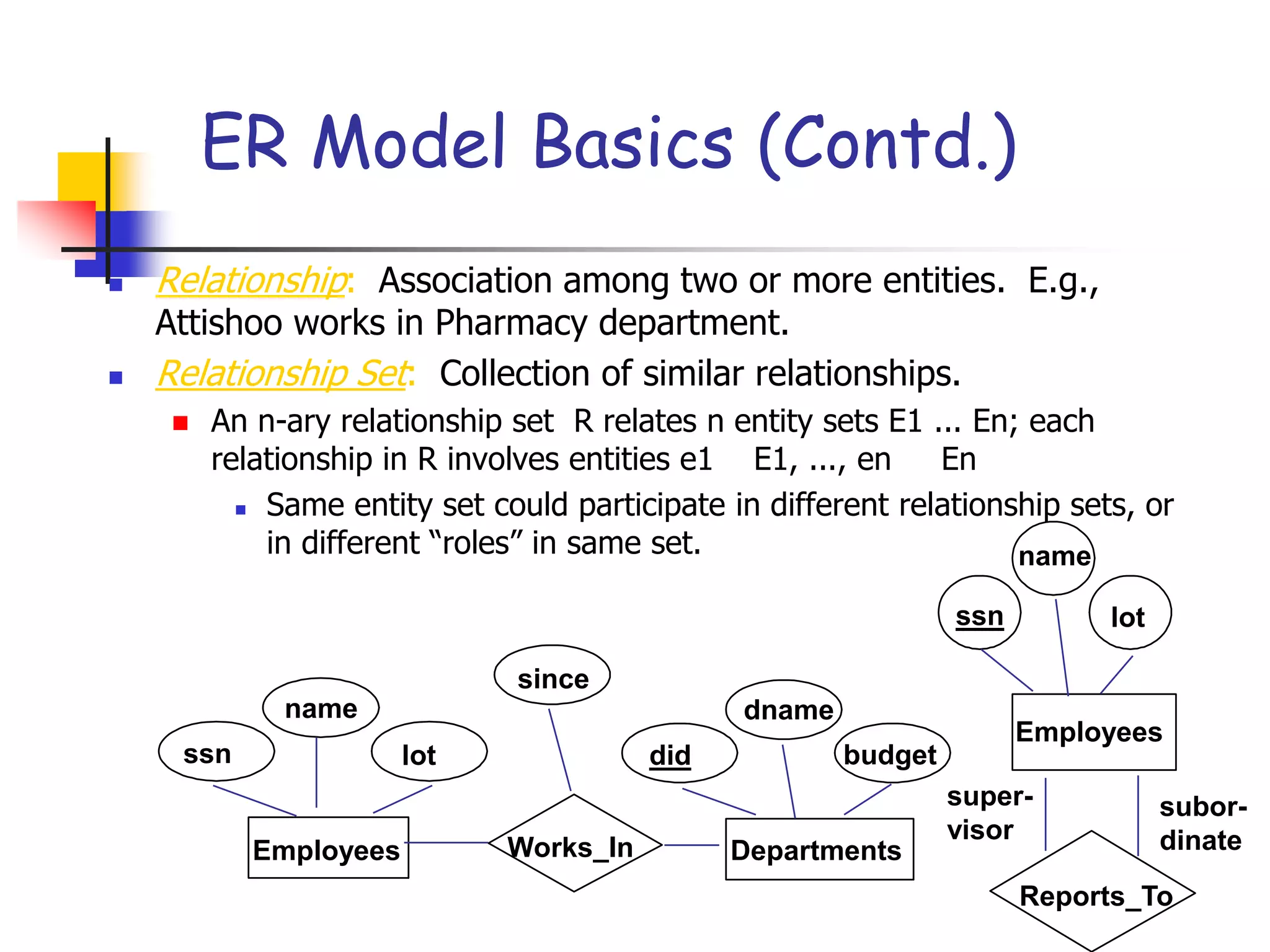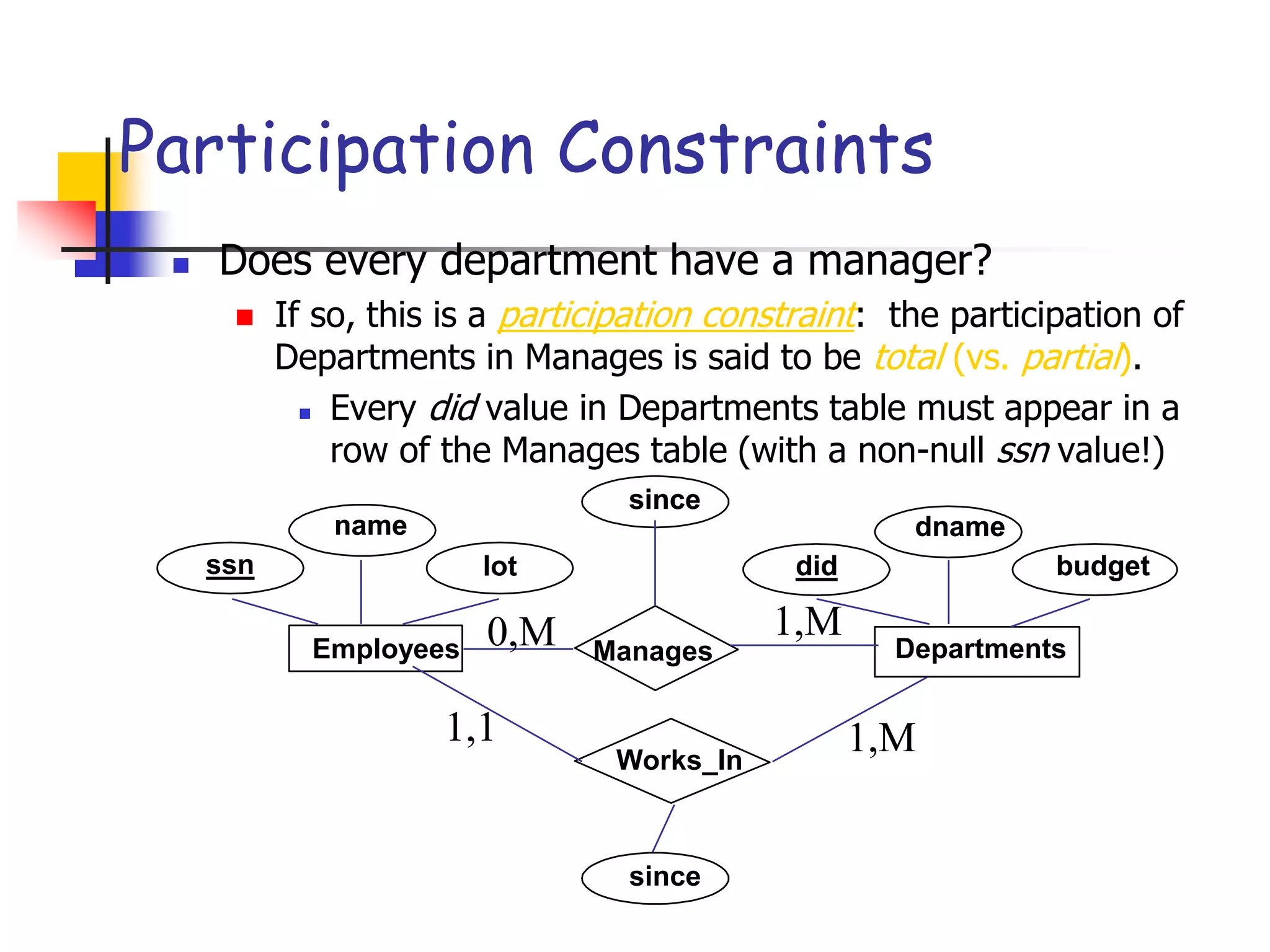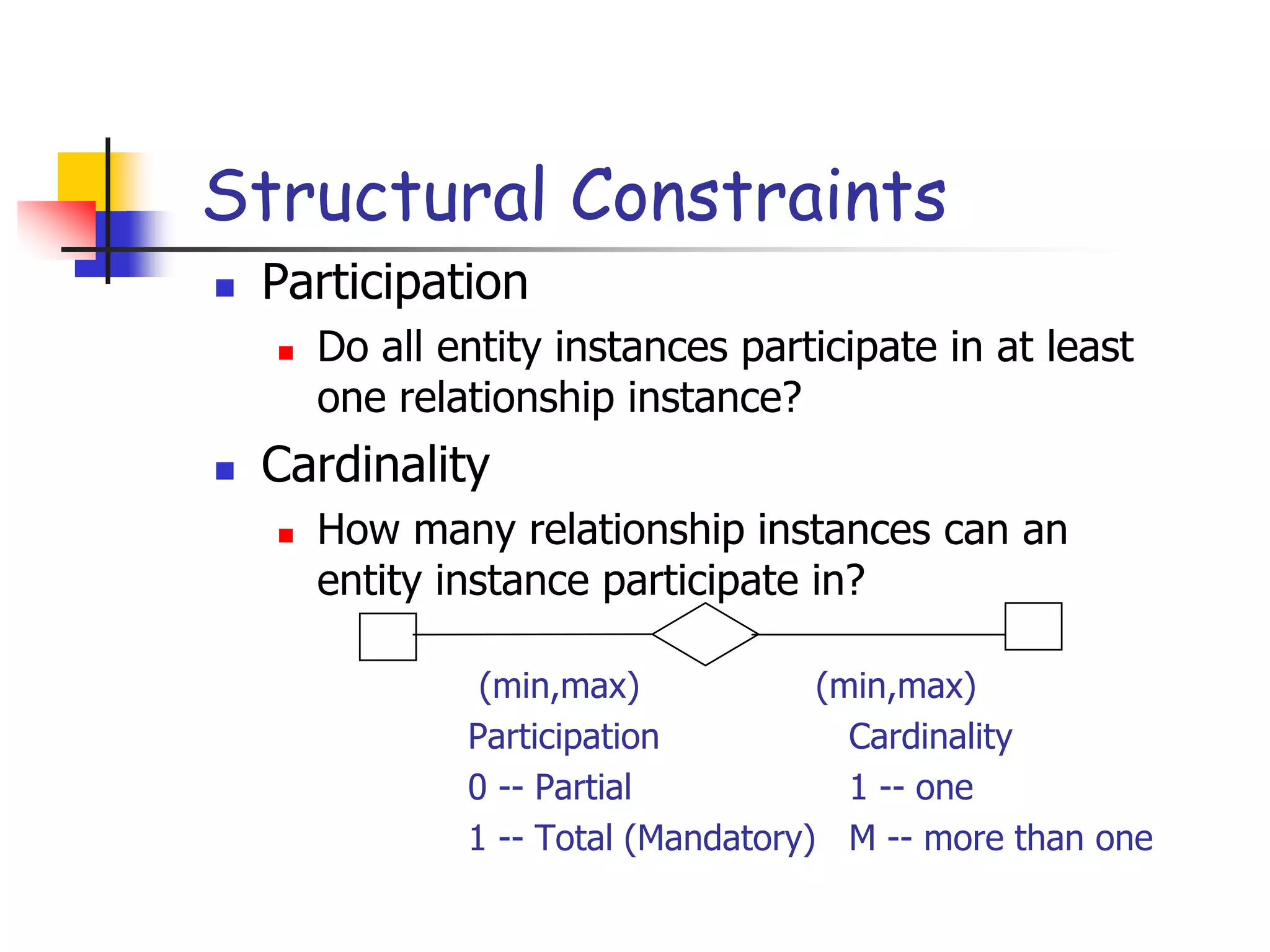The document provides information about entity relationship diagrams (ERDs) and data modeling. It discusses the objectives of data modeling which include understanding relationships between entities and incorporating them into database design. It also explains how to identify entities, attributes, and relationships based on nouns, descriptors, and verbs connecting entities. The document outlines the key components of ERDs including entities, attributes, relationships, cardinalities, and identifiers. It provides examples of a data model for a restaurant and explains how ERDs can be used as an effective communication and documentation tool.






